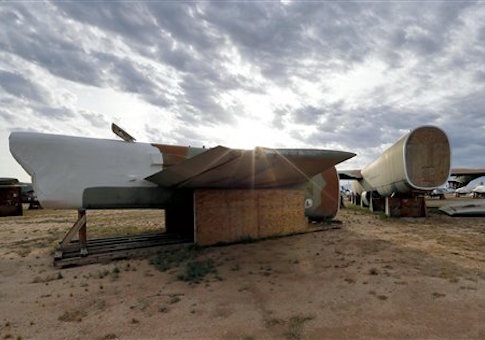As the media and politicians in the United States are currently focusing most national security discussions on the Islamic State and the broader threat of terrorism, there is little public focus on other, arguably more consequential challenges for American foreign and defense policy. Interestingly, one of these challenges often ignored is the only tool capable of achieving the apocalyptic vision that ISIS so violently seeks: Nuclear weapons.
American nuclear policy and strategy has largely been marginalized since the end of the Cold War, regarded as a relic from another time. Brad Roberts thinks otherwise, however, and articulates in his new and important book The Case for U.S. Nuclear Weapons in the 21st Century why nuclear weapons are still essential to America’s security and interests, as well as to global stability.
Having served as deputy assistant secretary of defense for nuclear and missile defense policy from 2009 to 2013, Roberts has unique insight into how the United States utilizes its nuclear deterrent and, just as importantly, how America’s adversaries use their nuclear arsenals to further their interests.
The main argument of the book is that nuclear weapons still play a crucial and necessary role for U.S. strategic policy, and thus, Washington should not take any unilateral steps to reduce its nuclear arsenal beyond the levels set by the 2010 New START Treaty with Russia. This is mainly because the United States "is apparently alone among the states with nuclear weapons to believe that it has more nuclear weapons than it needs." Roberts advocates for a balanced approach to nuclear strategy in which the United States utilizes political and legal means like arms control and nonproliferation to mitigate threats as it simultaneously uses military means to keep a strong nuclear deterrent while nuclear weapons exist.
He believes America’s long-term goal should be a world without nuclear weapons but is realistic about that goal, arguing that current conditions, and those of the foreseeable future, are not right for disarmament.
To advance his thesis, Roberts first gives a helpful overview of each presidential administration’s nuclear policy and posture since the end of the Cold War. He then discusses how deterrence can work effectively in the 21st century to create the circumstances required to decrease the role of nuclear weapons.
To this end, Roberts first turns to the threats posed by "nuclear-armed regional challengers" like North Korea before presenting U.S. strategic challenges with Russia and China. Roberts describes how there is evidence that these states have all formed what he terms "red theories of victory" in which they have thought to some degree about winning wars against the United States, with nuclear weapons playing a role. To match these adversarial contingencies, Roberts hypothesizes what the U.S. response would be, in what he terms the "blue theory of victory."
But the United States is not alone in facing these adversaries. Roberts also analyzes how Washington can strengthen deterrence for its allies in Europe, the Middle East, and Northeast Asia to keep North Korea, Russia, and China at bay, all while maintaining strategic stability with the latter two. Roberts illustrates how the United States must not only deter adversaries but also assure its allies that it is committed to their defense. One difficult part for America is to show resolve, without leading to an escalation in conflict.
Roberts’ book should be required reading for policymakers involved with forming U.S. global strategy. The writing is informative and surprisingly concise for such a complex topic. Moreover, Roberts takes a balanced approach to nuclear issues, grounding his idealistic aspirations for a nuclear-free world in the realistic understanding that such an outcome is impractical and dangerous for the foreseeable future.
The book is not without its blind spots. Roberts does not include any discussion of India or Pakistan’s nuclear arsenals despite their ongoing conflict in South Asia being the tensest nuclear standoff in the world. Washington is not directly involved there and this book focuses on American policy, but a brief treatment of how India and Pakistan factor into U.S. nuclear strategy would have been appreciated.
This book bears a broader lesson for the public. Some commentators and analysts have argued that the 21st century is a new age of warfare when terrorists and non-state actors will be the primary problems for the United States. Such threats are no doubt worrisome, but Roberts’ book serves as a reminder that the greatest challenges to American national security and world order will continue to be from nation-states and traditional geopolitical tensions, with nuclear weapons playing a central role. The United States must be prepared.
